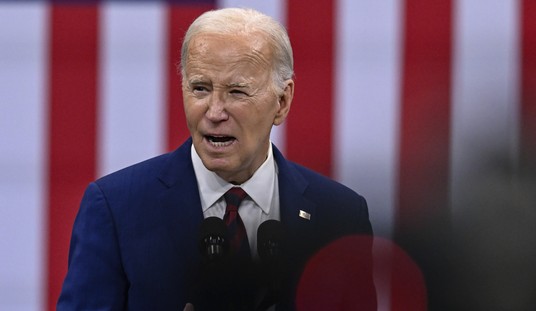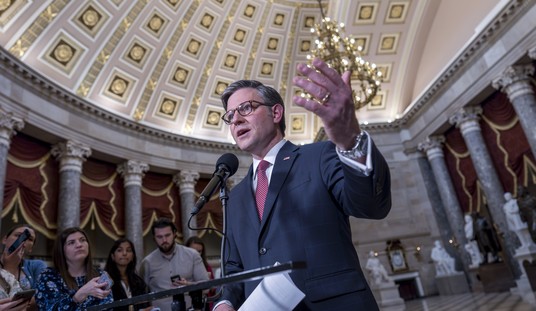Now this is what I call, sticking it to the man. Students in Wisconsin are protesting federal regulations that require school lunches to be no more than 850 calories. But in the big picture, this isn't about school lunches, it's about the federal government over regulating pretty much everything. Is it really necessary for the feds to be monitoring what kind of lunch is served in local schools? No and it's a waste of money and resources.
By 7 a.m. Monday, senior Nick Blohm already had burned about 250 calories in the Mukwonago High School weight room.
He grabbed a bagel and a Gatorade afterward; if he eats before lifting, he gets sick.
That was followed by eight periods in the classroom, and then three hours of football practice. By the time he headed home, he had burned upward of 3,000 calories - his coach thinks the number is even higher.
But the calorie cap for his school lunch? 850 calories.
"A lot of us are starting to get hungry even before the practice begins," Blohm said. "Our metabolisms are all sped up."
Following new federal guidelines, school districts nationwide have retooled their menus to meet new requirements to serve more whole grains, only low-fat or nonfat milk, daily helpings of both fruits and vegetables, and fewer sugary and salty items. And for the first time, federal funds for school lunches mandate age-aligned calorie maximums. The adjustments are part of the Healthy, Hunger-Free Kids Act of 2010 touted by Michelle Obama and use the updated Dietary Guidelines for Americans from the U.S. Department of Agriculture.
The changes are hard to swallow for students like Blohm. On Monday, 70% of the 830 Mukwonago High students who normally buy lunch boycotted cafeteria food to protest what they see as an unfair "one size fits all thing." Middle schoolers in the district also boycotted their school lunches, with counts down nearly half Monday. They're not alone in their frustration; schools across the country are reporting students who are unhappy with the lunch offerings.
Recommended
The school lunch one-size fits all example is a perfect picture of how the big government left generally thinks. Everyone has to do the same thing, despite difference in personality or individual need. There is no acknowledgement of healthy for one person being different for another. We covering this topic in the March 2011 issue of Townhall Magazine.
First, they came for the salt. Conservatives spoke out against the 2010 FDA decision to limit salt in food products, but the agency, empowered by a Democrat-controlled Congress and liberal White House, had no reason to listen. An FDA representative speaking under conditions of anonymity told the Washington Post that the agency was planning an initiative to work with food manufacturers to begin a “comprehensive phase-down” of salt in their products, with the goal of “embedding” changed tastes in the next generation. The new regulations would be open to public comment, but “administration officials [did] not think they need[ed] additional authority from Congress.”
Michelle Obama’s campaign against childhood obesity made waves when word got out that her pet project -- the Healthy, Hunger-Free Kids Act -- authorized the federal government to regulate bake sales. On Dec. 3, 2010, the Associated Press reported that the legislation authorized the Department of Agriculture to write guidelines requiring healthier food on school premises. “The legislation would apply to all foods sold in schools during regular class hours, including in the cafeteria line, vending machines and at fundraisers,” the report explained. Although language in the bill permits the secretary of Agriculture to ban bake sales altogether, Secretary Tom Vilsack explained in a letter to then-House Education and Labor Committee Chairman George Miller, D-Calif., that he did not plan to do that. Instead, the Department of Agriculture would determine how many “infrequent” bake sales to allow per school year. How reassuring.
If the authoritarians have their way, though, they will do a lot more than place an embargo on cookies. Perhaps the most Orwellian development took place during last summer’s confirmation hearings for then-Solicitor General and Supreme Court nominee Elena Kagan. When asked by Sen. Tom Coburn, R-Okla., whether Congress could pass a law requiring all Americans to eat vegetables, her response was that it “sound[ed] like a dumb law.” But she could not find any constitutional authority to strike such a law down.
Food hysteria has reached a fever pitch. Time was when Congress and the courts tried to heed the constitutional requirement to stay out of citizens’ private lives. Now, troubled by our food choices, they are churning out laws, regulations and initiatives to nudge our diets in their preferred direction. The National Institutes of Health monitors (and determines what constitutes) national obesity levels. Agencies from the Federal Trade Commission to the Department of Agriculture are using their regulatory power to muscle food manufacturers around. Lawsuits abound. What this nexus of paternalism amounts to is that citizens have increasingly less say over what they ingest. How did we reach this point?
It started with a number: Body Mass Index, or BMI, measures the amount of fat in a person’s body by plugging his height and weight into a formula. It is the favorite tool of public health officials to gauge the health of a population.
BMI may be the go-to method for national surveys of body fat, but it says very little about personal fitness levels. Instead, it indicates a national average health scale, which people can then measure themselves against. “Calculating BMI is one of the best methods for population assessment of overweight and obesity,” the Centers for Disease Control (CDC) website explains. “Because calculation requires only height and weight, it is inexpensive and easy to use for clinicians and for the general public.”
The ease with which BMI can be calculated (the formula essentially boils down to weight divided by height squared) makes it a great tool for surveying public health (and doesn’t require that anyone be prodded with calipers). That said, if a doctor ever recommends anything to you based on your BMI, you should run, not walk, away. ...

























Join the conversation as a VIP Member